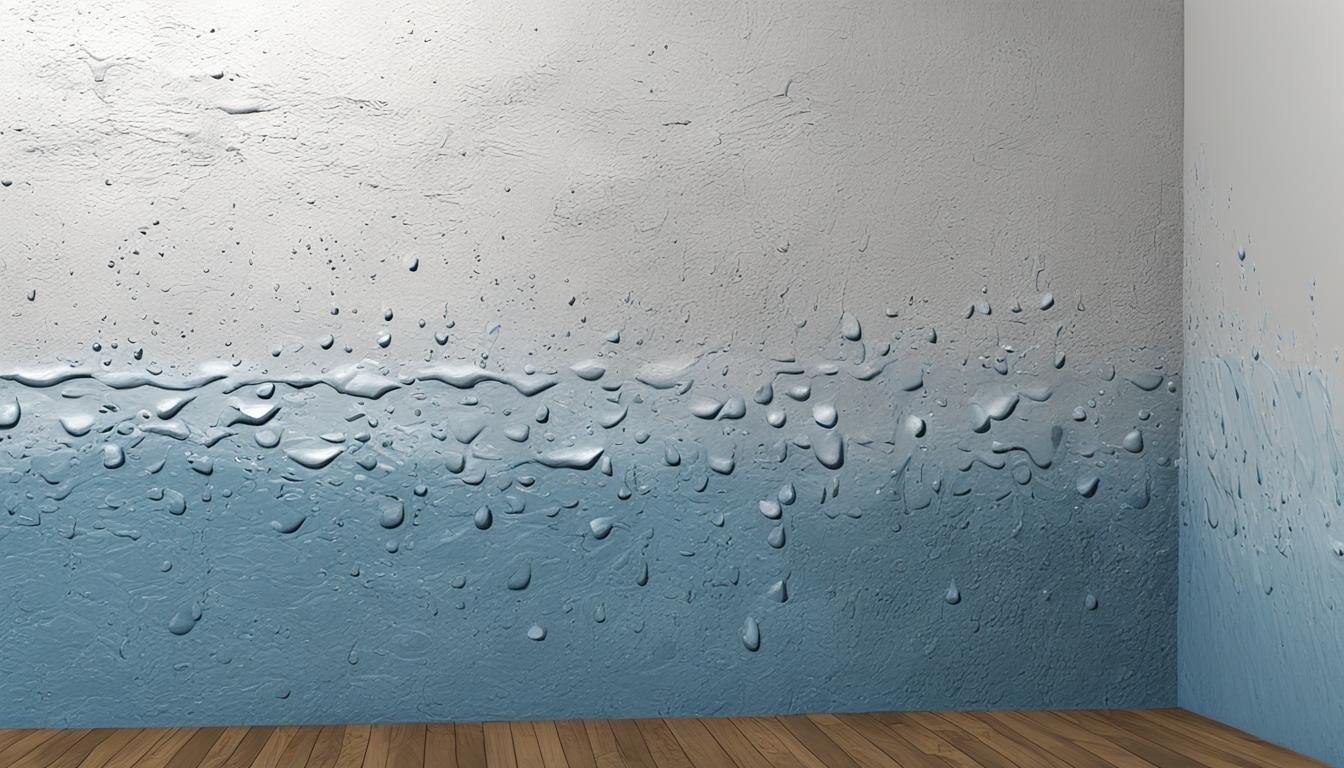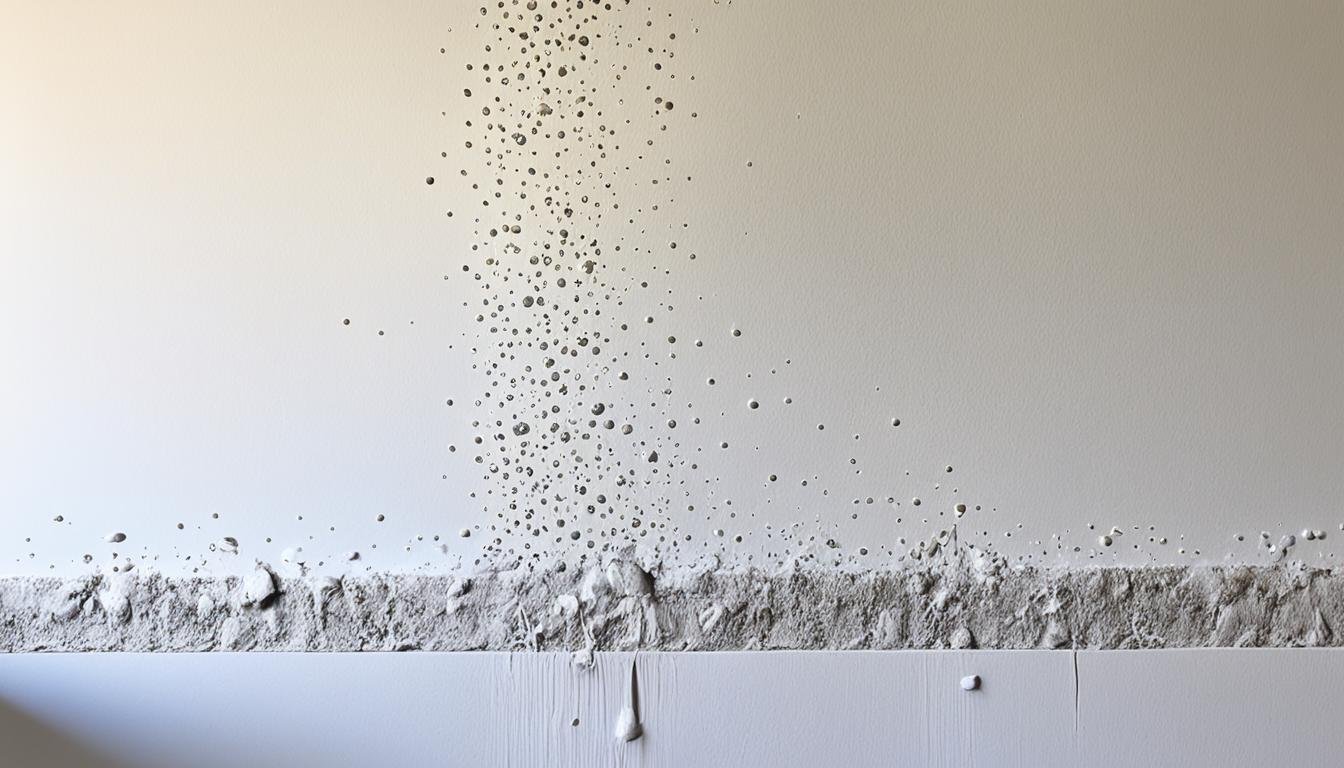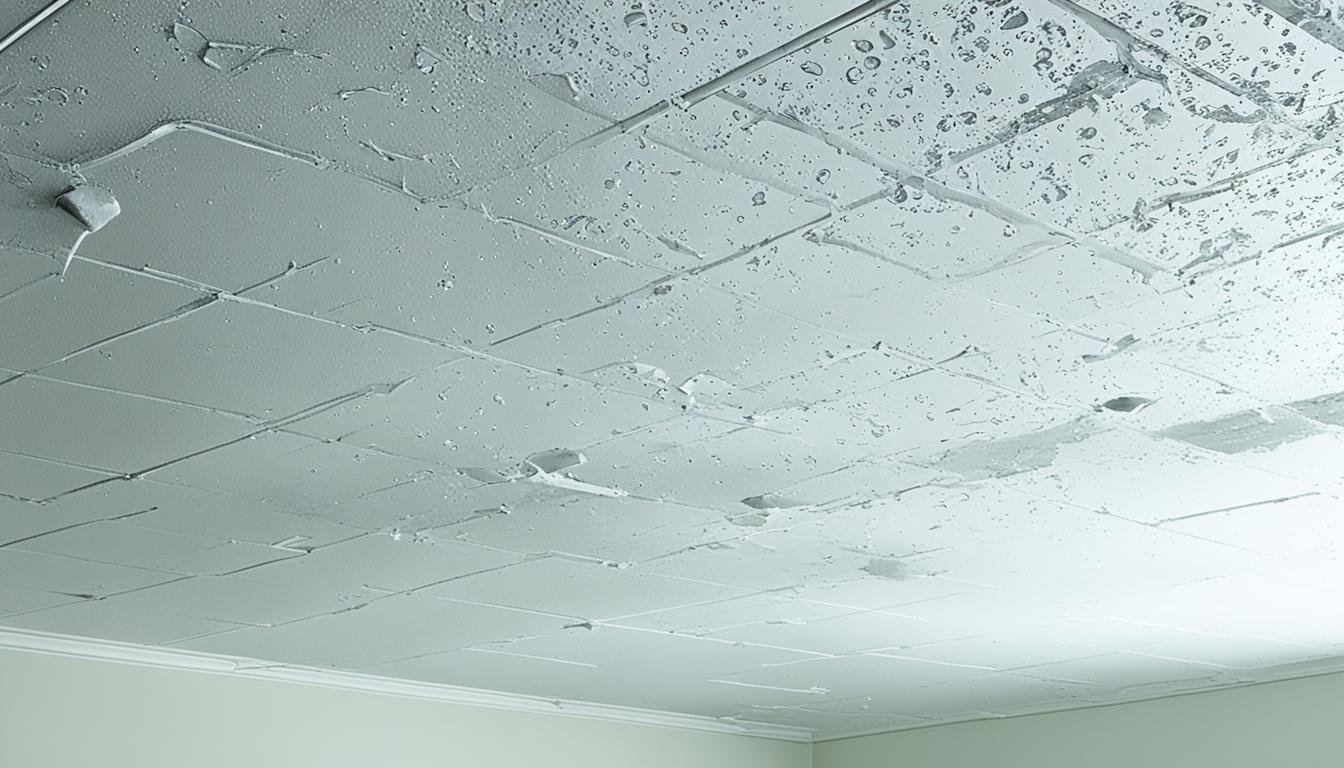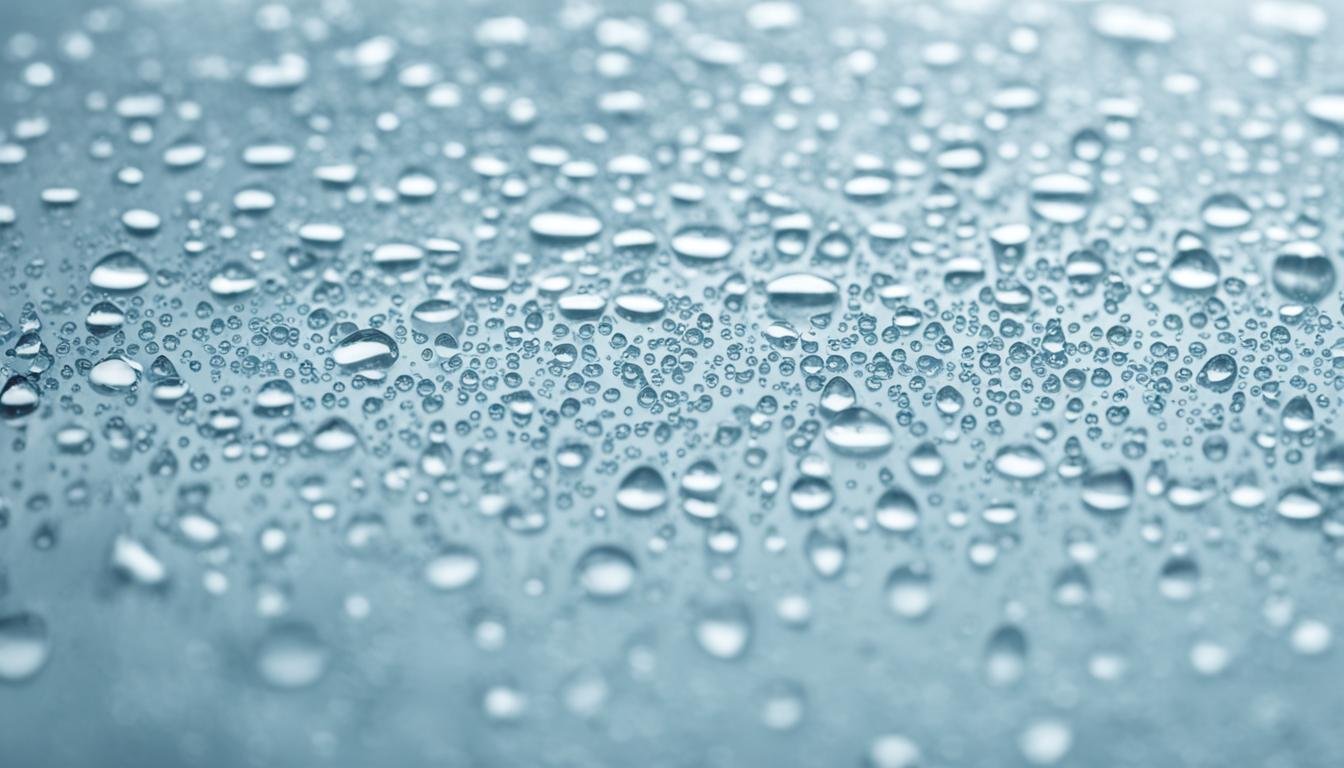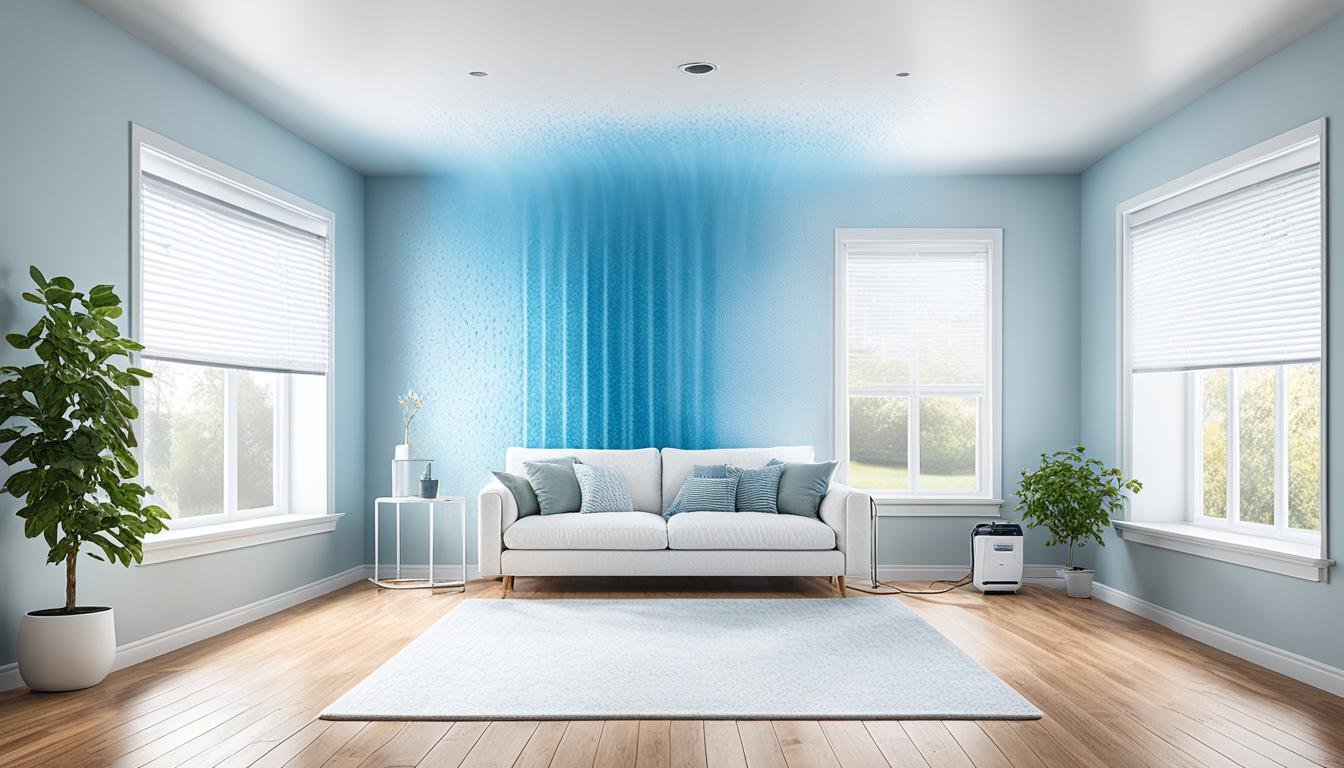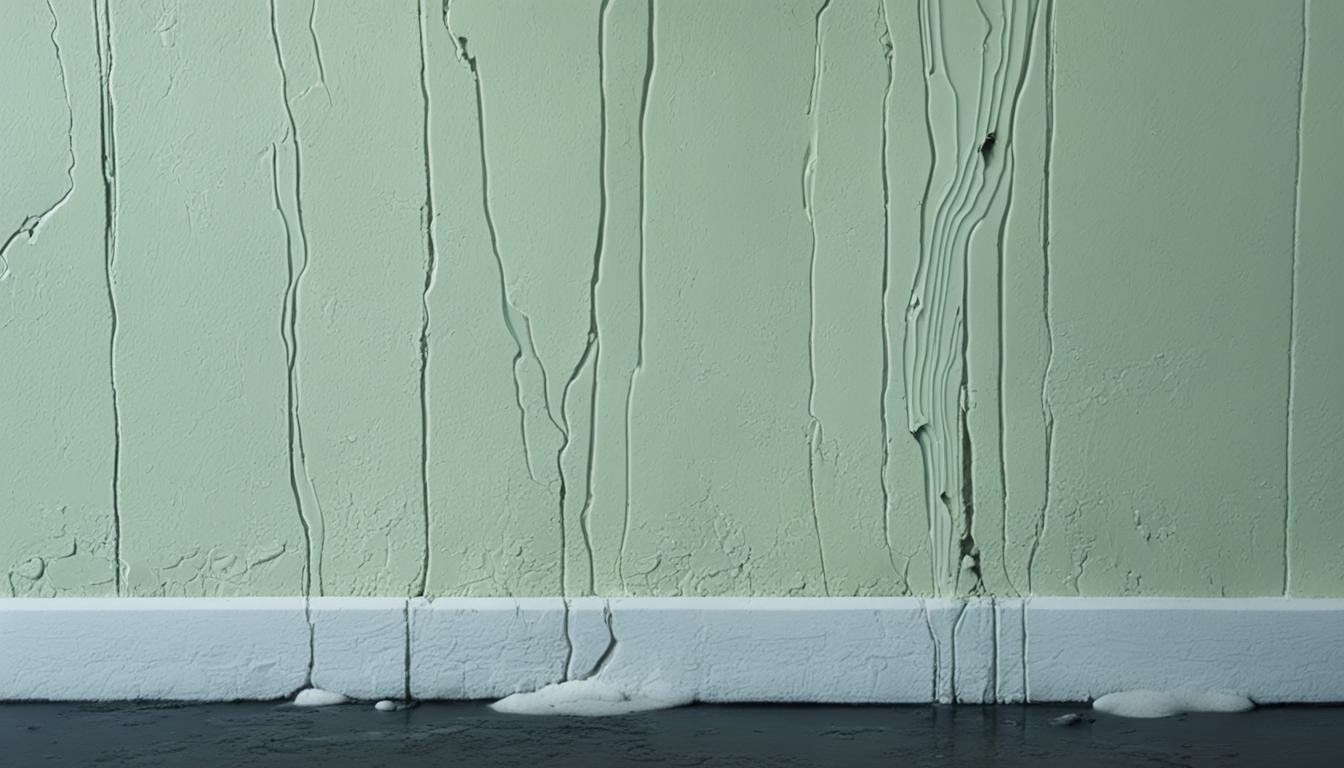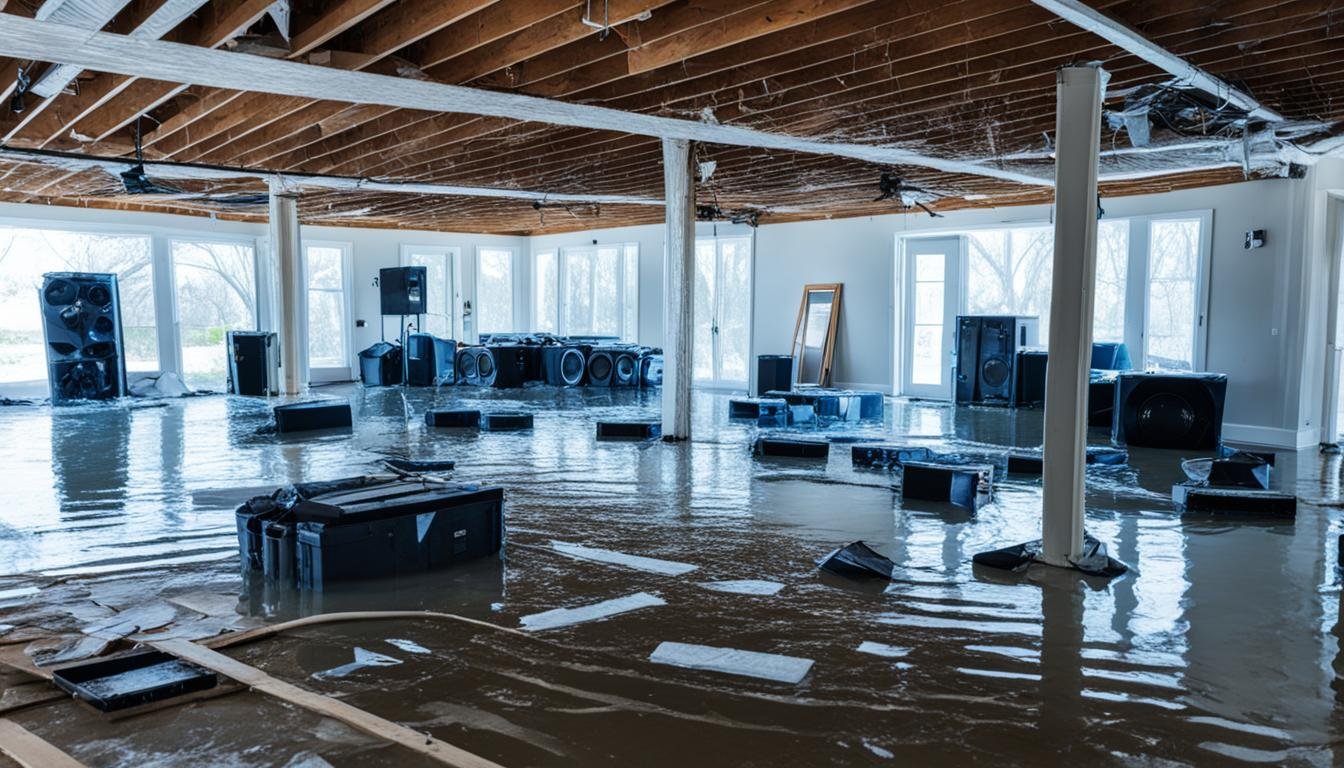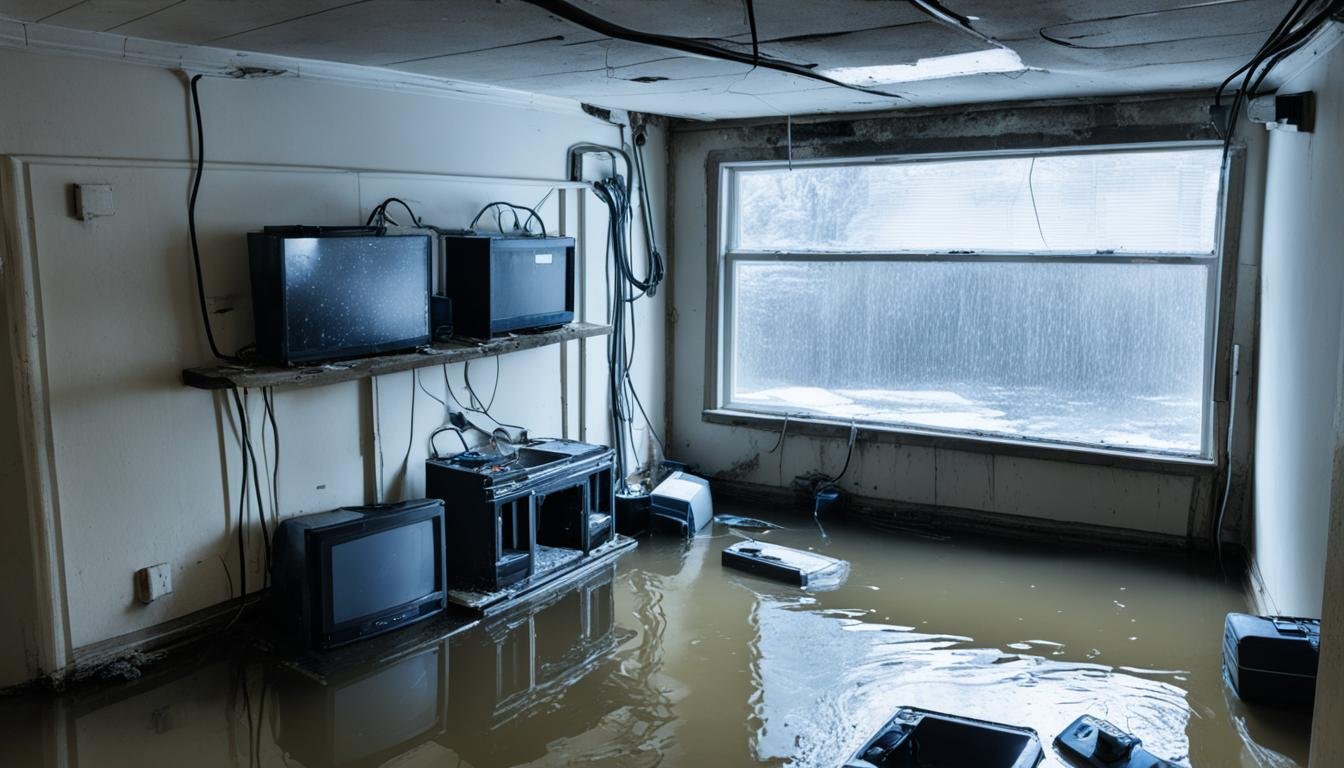Removing Moisture from Flooded Walls
Did you know drywall can suck up water as far as 30 inches? This fact shows why drying flooded walls is so vital. It helps avoid damage and keeps mold away. Whether a basement or your entire house is flooded, drying walls thoroughly is key for repair work. Cleaning up after a flood is slow and careful work. It’s best to drain water from the basement slowly, like a third each day. Also, remember to wear protection, including waterproof gloves, boots, and masks. When cleaning, use ammonia and trisodium phosphate for tough surfaces. For fabrics, go with general detergents and disinfectants. Drying out a space after a flood can be a long process, sometimes months long. It depends on what your walls and floors are made of and how long they were wet. For a fast dry and to stop mold, keep the air warm and use dehumidifiers. And hold off on remodeling for six months. This delay helps make sure everything’s really clean and dry, avoiding more issues. Key Takeaways Drywall can wick water up to 30 inches, indicating the importance of proper drying. Wear protective gear like waterproof gloves, work boots, and safety masks during flood cleanup. Use household ammonia and trisodium phosphate to clean hard surfaces, and all-purpose detergents and disinfectants for textiles. Drying walls and floors can take several months, but continuous air circulation and dehumidifiers can speed up the process. Wait at least 6 months before remodeling to ensure thorough cleaning and prevent residual moisture issues. Preparing for the Drying Process The first step in water damage restoration is removing any standing water. This is vital after a flood. It’s crucial to take out soaked items too. After getting rid of the water, focus on drying everything left, like wood and drywall. Understanding the Importance of Proper Drying Drying wet walls properly stops mold and further harm. If possible, open doors and windows to let fresh air in. Always watch the humidity outside. Close up if it’s wetter outside to avoid more moisture. This is especially critical at night. Dehumidifiers are key for moisture removal. They work better if windows and doors stay shut. Commercial dehumidifiers pull out much more water than regular ones. They are a big help during moisture removal. For big basement flooding or lots of water damage, consider experts. These pros have the right tools and skills. They can dry your place fast, often in less than a week. “Some companies can dry homes in less than a week with commercial dehumidifiers and air movers in cases of severe flooding.” Proper moisture removal is key to water damage restoration. This avoids mold and limits costs. Focus on the right steps and use the best tools and techniques. Removing Moisture from Flooded Walls After a flood, it’s important to act fast to prevent more damage. Removing Moisture from Flooded Walls is vital. It requires a step-by-step approach for thorough and proper drying. The start is cleaning out all the dirt and debris. Do this starting from the highest point of the water damage, moving down. Take out wallboard, plaster, and paneling up to the flood level. They act like sponges when wet and can harm your health if soaked with dirty water. If the water was from clean rain, you can cut part of the walls out for them to dry faster. This “chimney effect” boosts air circulation. While plaster typically doesn’t need replacing, it does take a while to dry. Salvage what you can of the paneling if it dries slowly, but get rid of any water-logged insulation that was flooded by dirty water. Using the right Dehumidification Methods and Moisture Removal Tools makes a big difference. Dehumidifiers and fans are key in removing moisture and speeding up drying. Don’t forget, fresh air from open windows and more fans helps too. Watching the walls dry is important, especially for preventing Mold Prevention Techniques. It’s crucial to disinfect the walls after removing the damp materials. Check often to be sure the walls are dry and the moisture is gone. For more severe flooding, getting professional help is wise. You may need assistance with Basement Flooding Remediation or Plaster and Drywall Drying. Water damage pros, like those at sanbernardinowaterdamagerestoration.com, can offer expert advice and help, ensuring your property bounces back as good as new. “Acting quickly and using the right drying methods are key. Ignoring moisture issues can turn into expensive repairs and health risks later on.” By carefully following the advice in Removing Moisture from Flooded Walls, homeowners and property owners can face flood aftermaths better. This helps avoid more harm and makes sure walls are safe and habitable again. Statistic Value Recommended time to remove water-logged items Within 24 hours of a flood Percentage of walls needing drilling For walls with vinyl wallpaper, high-gloss enamel paint, or multiple layers of wallboard, drilling holes is necessary to allow airflow into the cavity. Percentage of walls requiring complete removal for excessive moisture damage In cases of extensive moisture damage, it may be necessary to remove all wet wallboard and insulation. Recommendation for drywall restoration Gypsum wallboard that has not sustained primary damage typically restores well after drying. Minor swelling might occur, potentially necessitating repairs or replacement. Guideline for cabinet and vanity drying Professionals generally drill holes for drying cabinets and vanities through the toe-kick, aiming to minimize visible damage and maintain the structural integrity of the furniture. Precaution for drilling into drywall in older buildings It is advised to follow EPA’s Lead RRP (Renovation, Repair, and Painting) procedures when drilling into drywall in structures built before 1978 to prevent potential exposure to lead paint. Conclusion Getting rid of moisture properly after a flood is key to fixing your home. By using the tips in this guide, you can effectively dry out your walls. This will stop further issues like mold and harm to your home’s structure. Drying your walls and making your house less humid takes time and effort. Use tools like …

